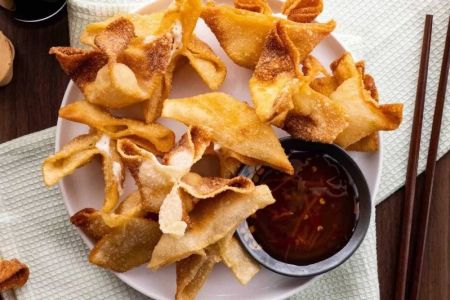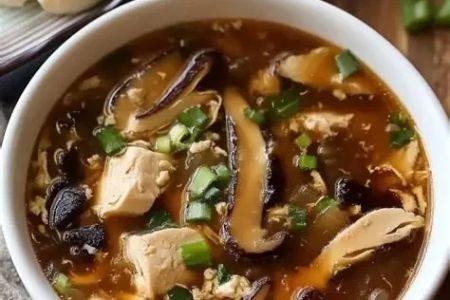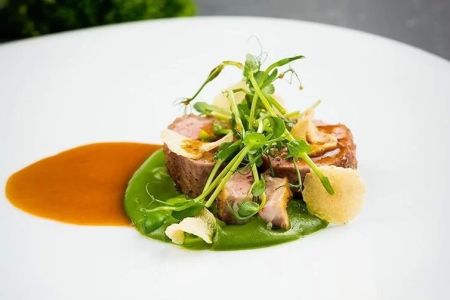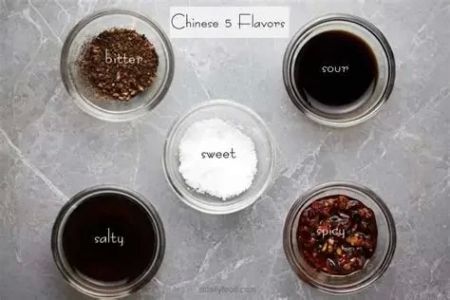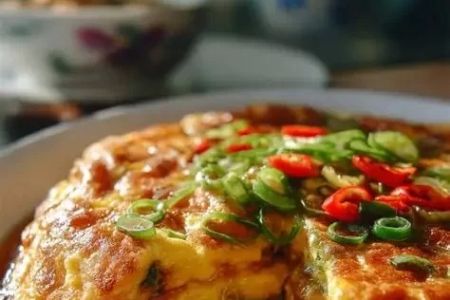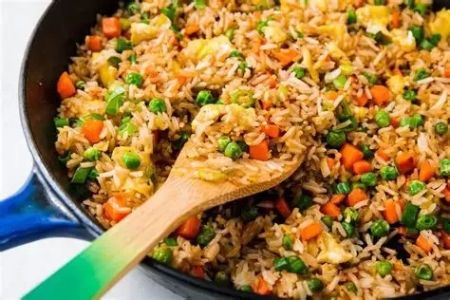Unlocking the Secrets of Anti-Aging Foods in Chinese Cuisine for Radiant Skin
As someone who has always been on the lookout for ways to stay youthful and healthy, I found myself fascinated by the concept of anti-aging foods in Chinese cuisine. Over the years, I've learned a lot about how certain ingredients in Chinese dishes have remarkable properties that can help maintain youthful skin and promote overall health. It’s not just about eating to nourish your body, but eating to preserve your skin’s glow and vitality. Let me take you on a journey through some of the ancient Chinese foods that can keep you looking younger for longer.
The Role of Chinese Cuisine in Skin Health
Chinese food is often associated with fresh, vibrant ingredients like ginger, goji berries, and green tea. These foods are not only delicious but have also been used for centuries to support health and beauty. Many of these ingredients are packed with antioxidants, vitamins, and minerals that are essential for maintaining healthy, glowing skin. For anyone looking to fight the signs of aging, Chinese cuisine offers a wealth of options that can help you achieve youthful, radiant skin naturally.
1. Goji Berries: The Ancient Superfood
If you’ve ever seen a bowl of Chinese herbal soup, you might have noticed goji berries floating inside. Known for their ability to promote longevity, these tiny red berries are rich in antioxidants that help neutralize free radicals—one of the leading causes of skin aging. Goji berries are packed with vitamin C, which is essential for collagen production, helping to keep your skin firm and smooth.
I first discovered goji berries during a trip to Beijing. A local chef invited me to try a traditional soup made with goji berries, and I was immediately struck by its subtle sweetness. What I didn’t know at the time was that this simple dish was packed with anti-aging benefits! The antioxidants in goji berries help reduce the appearance of fine lines and wrinkles, leaving your skin looking refreshed and rejuvenated.
2. Green Tea: A Powerful Antioxidant
Green tea is a staple in Chinese culture, and for good reason. It’s loaded with catechins, a powerful antioxidant that helps fight the damage caused by UV rays, pollution, and other environmental stressors. I began drinking green tea regularly after reading about its skin benefits, and I noticed a visible improvement in my complexion within weeks.
What’s even more fascinating is that green tea has anti-inflammatory properties, which can help reduce redness and irritation. I’ve found that sipping on green tea throughout the day helps calm my skin and keeps it looking bright. Many Chinese skincare products also include green tea extracts because of its proven effectiveness in slowing down the skin’s aging process.
3. Tofu: The Plant-Based Beauty Food
Tofu is another gem in Chinese cuisine that contributes to skin health. Rich in plant-based proteins, tofu contains isoflavones, compounds that mimic estrogen in the body. Estrogen is a key hormone for maintaining youthful skin, as it helps keep the skin hydrated and firm. Tofu’s ability to support hormone balance makes it an excellent choice for those looking to fight signs of aging.
On one of my trips to Chengdu, I had the pleasure of tasting Mapo Tofu, a famous Sichuan dish. The tofu’s smooth texture was paired with spicy flavors, creating an unforgettable experience. While the dish was delicious, I later learned that eating tofu regularly can help maintain the skin’s elasticity and keep it looking plump. Over time, I noticed fewer fine lines around my eyes—proof that the plant-based proteins in tofu were doing their job!
4. Chinese Herbs and Medicinal Foods: Nature’s Healing Powers
Chinese cuisine has a long tradition of using herbs not only for flavor but also for healing. Many of these herbs contain compounds that are beneficial for skin health. For instance, ingredients like ginseng, Chinese angelica root (dong quai), and chrysanthemum flowers are commonly used in soups and teas to support the skin’s health and promote circulation.
During one of my trips to Shanghai, I was introduced to a herbal tea made from chrysanthemum flowers, which are known for their calming properties. After drinking it for a few weeks, I noticed that my skin appeared more radiant, and my complexion had a natural glow. Ginseng is another herb that I’ve incorporated into my daily routine, as it helps boost circulation and promotes healthy, youthful skin.
5. Sweet Potatoes: The Skin Nourisher
Sweet potatoes are another anti-aging food often found in Chinese cuisine. Rich in beta-carotene, a precursor to vitamin A, sweet potatoes are excellent for maintaining healthy skin. Vitamin A is essential for cell turnover and helps to repair damaged skin. By eating sweet potatoes regularly, you’re ensuring that your skin remains smooth, and you’re helping to prevent the formation of wrinkles and fine lines.
On a recent trip to Hong Kong, I had the chance to try a traditional Chinese dessert made with sweet potatoes. The soft, caramelized sweetness of the dish was incredibly satisfying, and I soon learned that it was also packed with skin-loving nutrients. I now enjoy sweet potatoes as part of my regular diet, especially in the colder months when my skin tends to get dry and dull. Their high vitamin A content helps my skin stay moisturized and bright.
6. Ginger: A Skin Rejuvenator
Ginger is another powerhouse ingredient that I’ve incorporated into my diet for its anti-aging properties. Known for its anti-inflammatory effects, ginger helps reduce skin irritation and redness. It also improves circulation, ensuring that nutrients reach your skin cells efficiently. I love adding fresh ginger to my teas and stir-fries, and I’ve noticed that it helps improve my skin’s overall texture and tone.
One evening, while visiting a small family-owned restaurant in Beijing, I was served a warm ginger tea that was said to promote skin health. The soothing warmth of the tea made me feel relaxed, and the next day my skin appeared noticeably more vibrant. It turns out that ginger’s high levels of antioxidants are key to fighting the aging process.
7. Sesame Seeds: Rich in Healthy Fats
Sesame seeds are a common ingredient in Chinese cuisine, and they’re known for their ability to nourish the skin from the inside out. Packed with healthy fats, including omega-3 fatty acids, sesame seeds help keep the skin moisturized and elastic. The oil from sesame seeds is also rich in antioxidants, which help combat the signs of aging.
During a visit to a Chinese herbal market, I came across a sesame seed paste that was used in a variety of dishes. Intrigued, I decided to try it in a salad dressing, and the results were amazing! After incorporating sesame seeds into my diet, I noticed that my skin felt softer and more hydrated. It’s now a regular part of my anti-aging routine.
Embracing the Anti-Aging Power of Chinese Cuisine
When it comes to anti-aging, Chinese cuisine offers a wealth of natural, nourishing ingredients that can help you maintain youthful skin. From goji berries to green tea, tofu, and ginger, these foods are packed with nutrients that protect your skin, reduce inflammation, and promote a healthy glow. By incorporating these foods into your diet, you can enjoy the benefits of centuries of Chinese culinary tradition while maintaining your skin’s health and vitality.
Whether you’re trying a new dish at your local Chinese restaurant or preparing an authentic recipe at home, I encourage you to explore the beauty-boosting potential of Chinese cuisine. You might just discover the secret to aging gracefully while enjoying delicious, healthful meals along the way.


